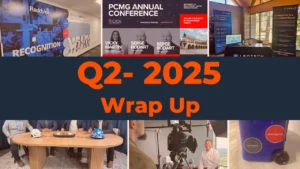5 Surprising Uses for Walk-Ins
Applications of panels are surprisingly multi-faceted, and creative designers are taking advantage of their unusual versatility to develop some uses that are both interesting and unexpected. Here are 5 of those unusual applications of ‘walk-ins’.
- Guitar Storage
For many musicians and collectors, their instruments are considered an extension of their body. If something is off with their main tool of expression, they tend to sense it before the first string is even strummed. For manufacturers, keeping guitars stored at a precise environment is of paramount importance. As instruments go, guitars are particularly temperamental and require special attention for their storage—controlling the moisture and temperature is essential. Insulated panels can be the single most important aspect of gaining that control.[1] With an insulated area, proper hydration is possible using a digital hygrometer, which reads the environment’s humidity level, and a standard guitar humidifier or warehouse controls to make the necessary adjustments.[2] Insulated panels make readings more precise and offer peace of mind, protecting guitar collections from dramatic climate swings.
- Storing Artwork in Museums and in Private Collections
From the Museum of Modern Art to an amateur’s collection of oil paints, climate control is important in storing art materials and finished pieces alike. Managers and curators at museums have long since determined that the best way to battle deterioration is to get ahead of it. “Preventive conservation” involves controlling potentially harmful environmental elements such as harsh light, pests, and humidity.[3] Insulated panels are useful for long-term storage in small spaces where total control must be achieved. Insulated panels can also mitigate the challenges of large spaces, such as exhibit floors, where numerous environmental factors come in to play. Proponents of preventative conservation highlight the need to monitor and manage all the variables, and insulated panels make that possible. The work of legendary painters and local artists are all one-of-a-kind creations—care for these masterworks is a highly specialized field, and can’t be taken lightly.
- Peanut Storage
With their hard shell that can be a struggle to crack, peanuts may seem like a relatively straightforward and easy product to store safely. Looks can be deceiving, as peanuts require a precise system of ventilation, aeration, and moisture control to ensure safe storage and processing. The enemy of farmers and peanut processors is condensation, which is the single greatest factor in determining final peanut quality.[4] A shift of a mere percent or two of moisture (over the max threshold of 10%) can take a peanut from premium to poor. In fact, it’s often the case that selling peanuts stored at above 10% moisture content is illegal for farmers. From large-scale insulation products at the harvesting level to intermediate storage as the peanuts head toward processing and packaging, the control offered by storage warehouses and insulated panels is not only valuable but, in many cases mandatory.
- Insulating the Sciences
The scientific method relies on unparalleled accuracy and flawless repeatability. It’s a given that as many variables as possible need to be controlled for an experiment to lead to serious, reliable results. What’s easily missed is how much effort scientists in all disciplines expend on taking that control. Insulated panels were born in a laboratory, so it only makes sense that they return to their origins. Implementing insulated panels provides lab technicians the ability to control temperatures and humidity to ensure uncompromised, reliable results. Likewise, insulated panels’ simpler installation over traditional materials makes field research stations that much more manageable as well.[5] In a laboratory or just down the street, insulated panels facilitate consistent scientific research and result storage.
Equipment Storage
Controlling for temperature, dust, and moisture is essential for storing sensitive equipment, but equipment sizes are rarely uniform. Modular structures can be constructed to exact specifications, allowing for tailor-made solutions that don’t waste space or energy. Cam-lock mechanisms makes for easy on-site assembly. Today, insulation structures are made to fit the equipment they will store, not the other way around.
There are countless more applications for insulated panels in use now and being developed. It’s just a matter of waiting to see what’s next for this flexible, multifunctional solution.
To learn more about possible applications for insulated panels and how they are used in various ways, just visit: https://kpsglobal.com/products/insulated-panel-systems/.
Read more at kpsglobal.com
Sources:
[1] https://blog.taylorguitars.com/using-a-guitar-humidifier-and-other-guitar-humidity-tips
[2] https://www.taylorguitars.com/support/maintenance/using-guitar-humidifier
[3] http://www.philamuseum.org/conservation/10.html
[4] http://www.peanutscience.com/doi/pdf/10.3146/i0095-3679-16-1-14
[5] https://www.lifeofanarchitect.com/building-with-structural-insulated-panels-or-sips/









